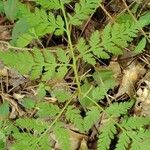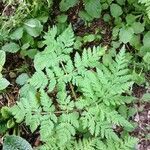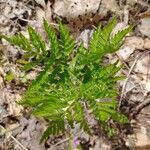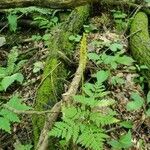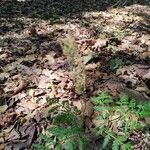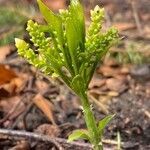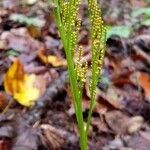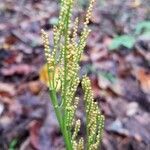Plants 20–75 cm; bud becoming exposed on one side, its blade and sporophore both reflexed; blade medial or somewhat supramedial, sessile, thin, deciduous, sparingly pilose, deltoid, mostly 7–20 × 10–30 cm, 2–4 times ternate-pinnately compound, the pinnules and segments decurrent, the ultimate segments acutely toothed; sporophore bipinnate or tripinnate, mostly 6–15 cm, on a stalk 7–20 cm; 2n=184. Woods and moist, open places; Nf. and Lab. to Alas., s. to Fla. and Calif.; also in s. Mex. and irregularly in Eurasia. Spring and early summer.
Trophophore sessile; blade pale green, 3--4-pinnate, to 25 × 33 cm, thin, herbaceous. Pinnae to 12 pairs, usually approximate to overlapping, slightly ascending, distance between 1st and 2d pinnae not or slightly more than between 2d and 3d pairs, lanceolate, divided to tip. Pinnules lanceolate and deeply lobed, lobes linear, serrate, apex pointed, venation pinnate, midrib present. Sporophores 2-pinnate, 0.5--1.5(--2) times length of trophophore. 2 n =184.
A large succulent fern. It has stems up to 50 cm tall. The sterile blade in thin and triangle shaped and 15 cm long. The spore sacs have long stalks.
